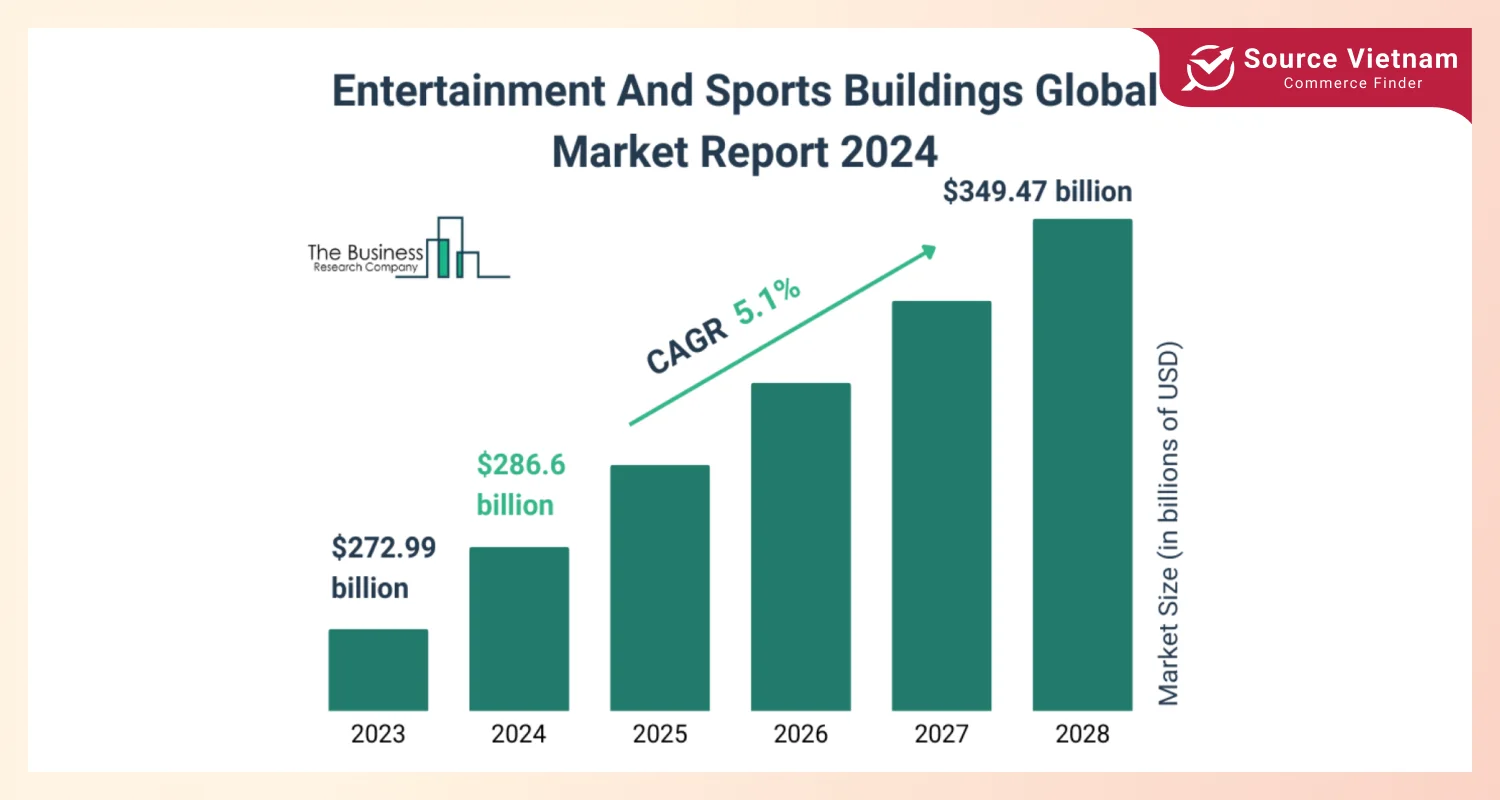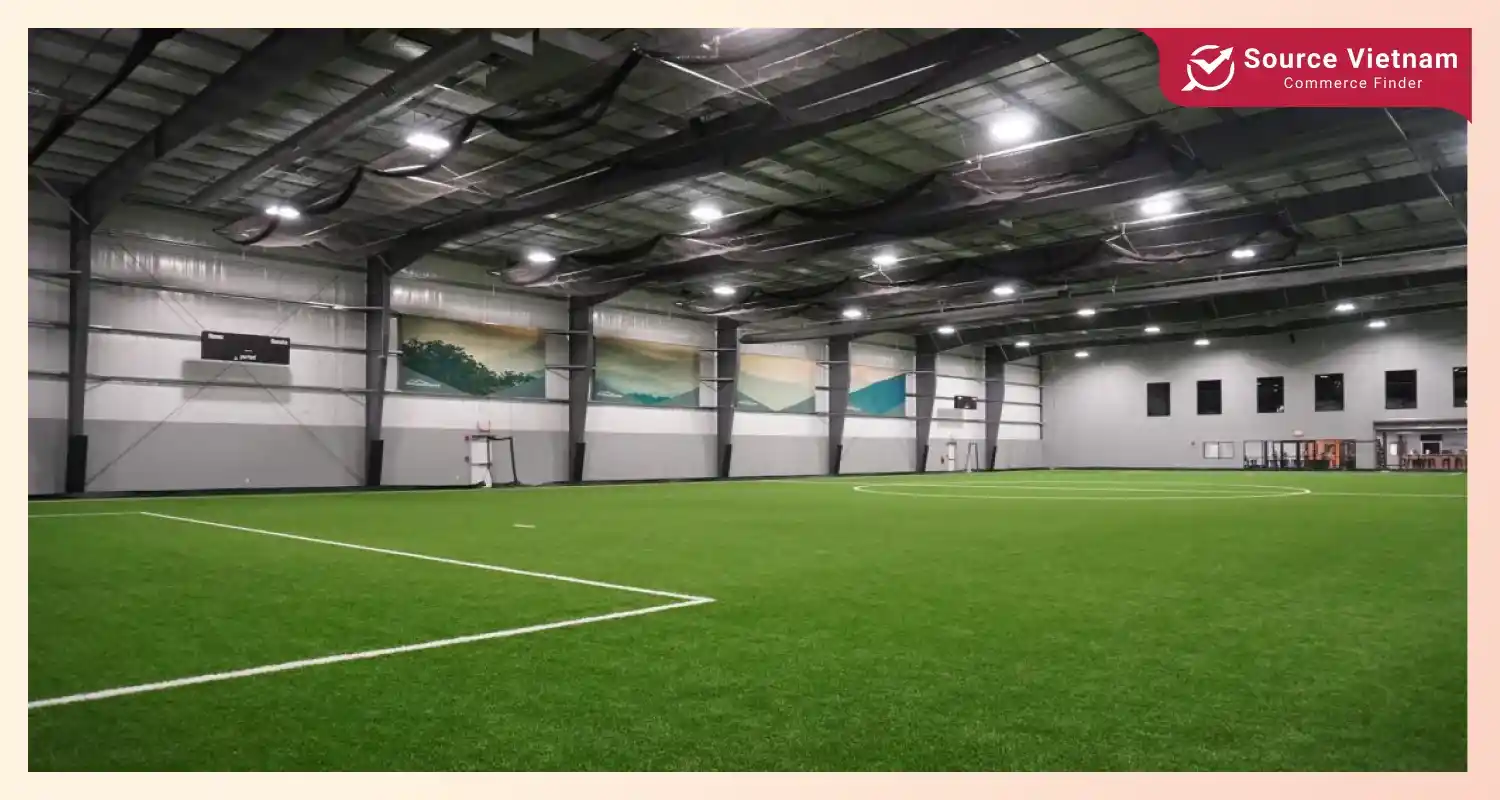Insights:
- As reported earlier, by 2033, the global revenue of entertainment and sports buildings is set to reach $349.47 billion, and the current figures indicate that there are a lot of mastery opportunities.
- Most countries these days are speeding their development and construction in terms of their programs as a result, there have been increased investments in this area.

The international industry for the construction and development of sporting and entertainment venues has a lucrative potential, heading towards revenue of $349.47 billion by 2033. This can be attributed to more development projects by the governments, increased participation of athletes and the integration of advanced technology.
Market overview
The past years have also been equally good for the entertainment and sporting structures market. For the year 2024, the revenue is expected to be at $286.6 billion. And if the predictions are right, then by the year 2033 the global industry expenditure will have grown to be in the region of $349.47 billion. In that case, the market would have a five-year CAGR of 5.1% for the period 2024 – 2033.

Typical structures are stadiums, theatres, arenas and other similar facilities for the performance of different forms of sports and entertainment. Such places are used to host events such as theatre, cinema, and sports activities. The market includes both new construction and reconstructions.
Market segments
The market is divided into three main segments:

By building type
- Non-residential smart buildings: These use advanced technology to save energy and improve efficiency.
- Traditional buildings: Standard construction without smart technology.
By construction type
- New construction: Building completely new facilities.
- Renovation: Upgrading or improving existing structures.
By end user
- Private: Facilities built for private organizations or individuals.
- Public: Buildings funded by governments or public entities.
Regional overview
The Asia-Pacific region led the market in 2023. It remains the largest market for entertainment and sports buildings. Africa is expected to grow the fastest during the forecast period. Other major regions include:
- Western Europe
- Eastern Europe
- North America
- South America
- Middle East
Key countries include the United States, China, India, and the United Kingdom. Additional countries like Vietnam, Thailand, and Malaysia are also included for a fee.
Market drivers
Two main factors are driving growth:

- Government investments:
Governments are spending heavily to build and renovate sports and entertainment facilities. For example, the UK has committed £230 million ($285.5 million) over four years to improve its sports infrastructure. This includes upgrading 8,000 pitches, clubhouses, and community spaces.
- Increasing athlete numbers:
The number of athletes worldwide is growing. In 2022, NCAA women’s sports saw a 5% increase in student-athletes compared to 2021. This creates more demand for advanced sports buildings.
Key market trends
- Technological advancements:
New technologies are being used in construction. Companies are using drones, 3D visualization tools, and autonomous machines to improve efficiency. For instance, Komatsu Ltd. introduced a Smart Construction Drone in 2021. It simplifies tracking and provides precise data for large construction sites.
- Strategic partnerships:
Companies are partnering to offer better services. In 2023, Acrisure Stadium in the US teamed up with Evolv Technology. They installed AI-based weapon detection systems at stadium gates to ensure fan safety.
Major players

Some of the top companies in this market are:
- Shanghai Construction Group Co. Ltd.
- Bouygues SA
- Larsen & Toubro Ltd.
- Brookfield Asset Management
- AECOM Technology Corporation
- McCarthy Building Companies Inc.
These companies are leading innovation in the industry.
Challenges and opportunities
Besides the market growth potential, some setbacks, such as the high cost of construction, legal challenges, and environmental impacts, still remain. These setbacks, however, can also be viewed as avenues for innovation. Sustainable designs, intelligent venues, and AR for live entertainment are the future of this sector and are helping address the issues of sustainability while also improving the overall user experience.
Market Outlook
The entertainment and sports buildings market will continue to grow. By 2028, the revenue is projected to reach $349.47 billion. Governments, private companies, and technological innovations are driving this growth. The focus on energy efficiency and smart technologies is shaping the future of this market.
Conclusion
As the demand for entertainment and sports experiences continues to rise, the global market for specialized buildings will remain a dynamic and lucrative sector. With governments, private entities, and innovative technologies driving growth, the future of these venues looks promising. From sustainable construction practices to cutting-edge fan experiences, the industry is poised to deliver world-class facilities for generations to come.















